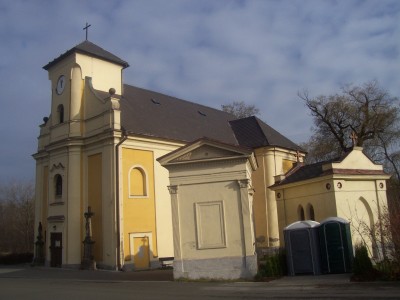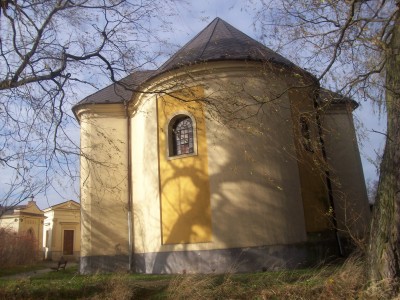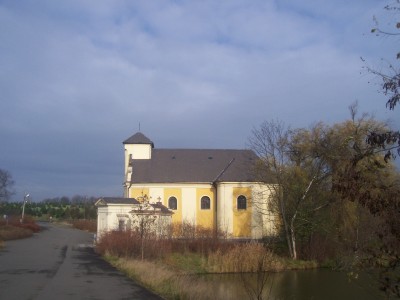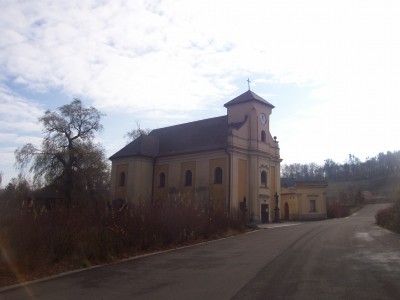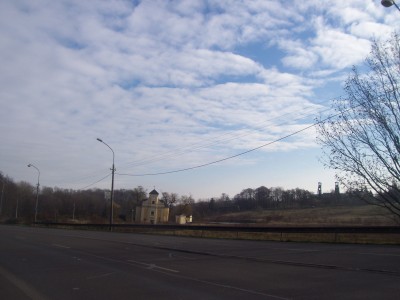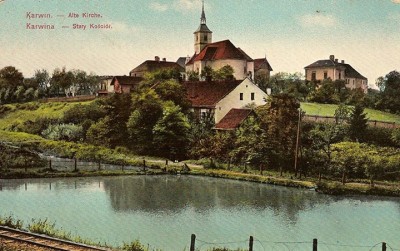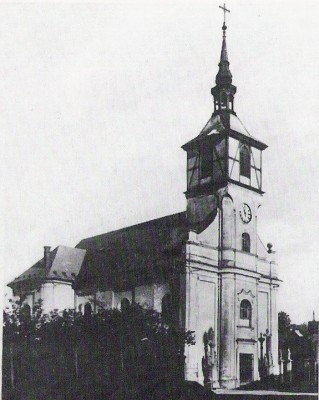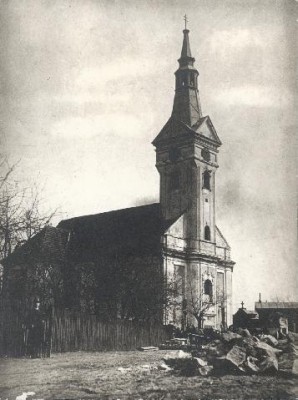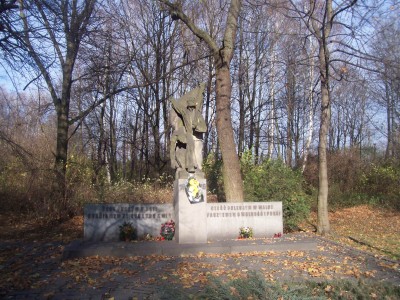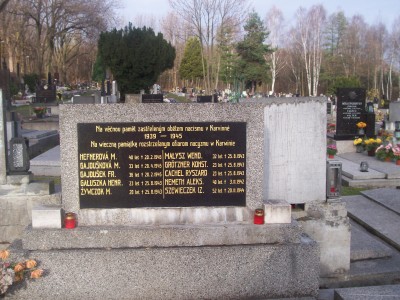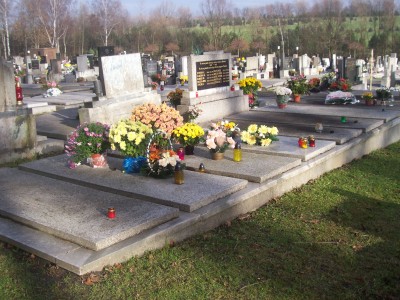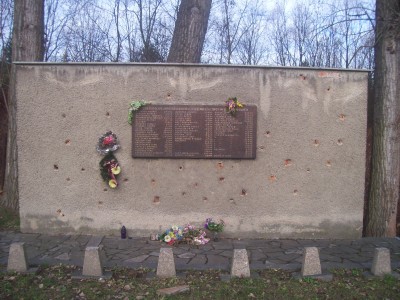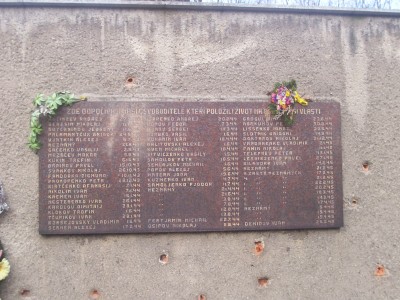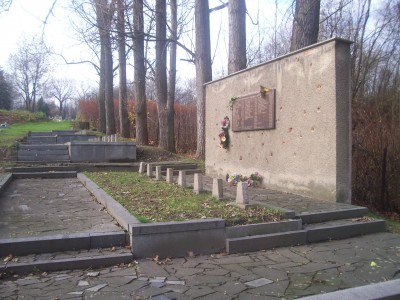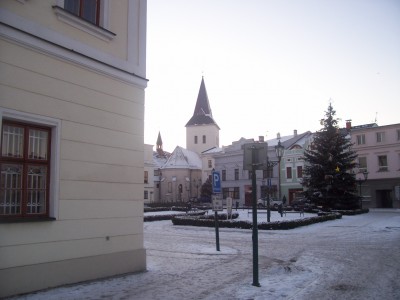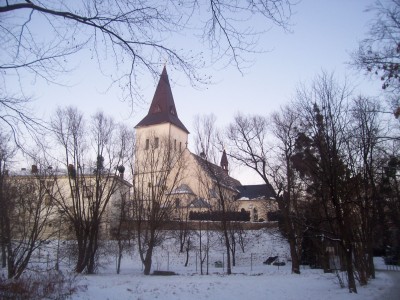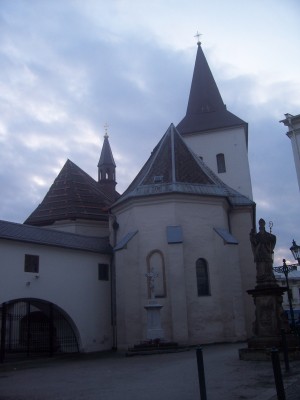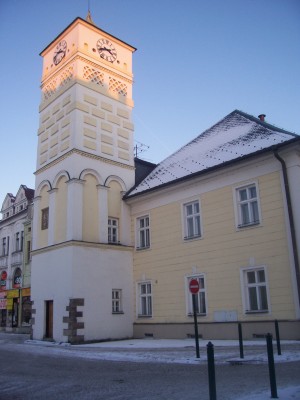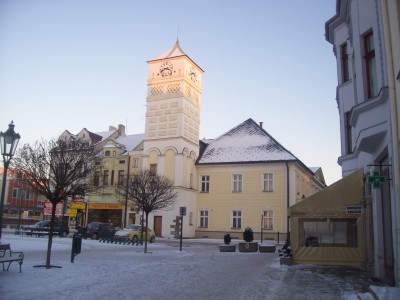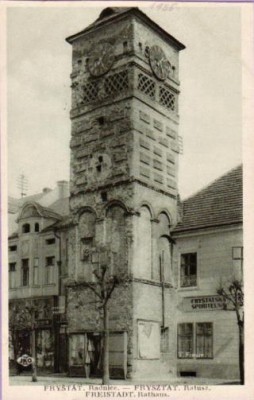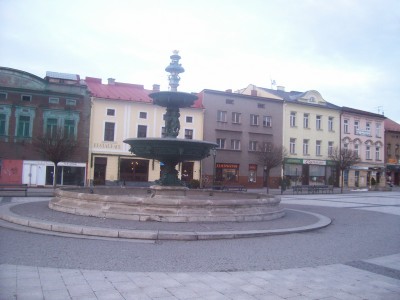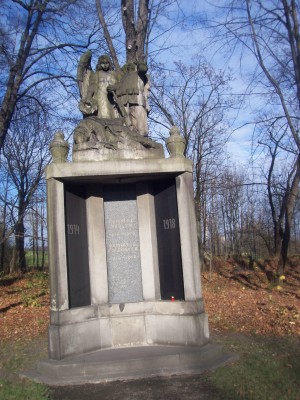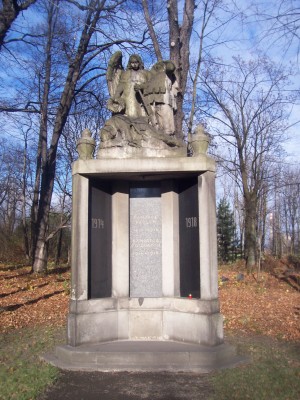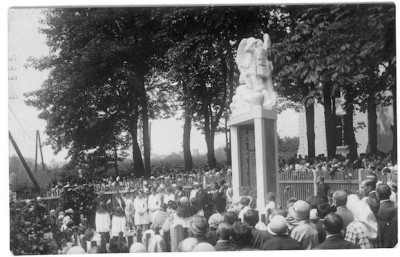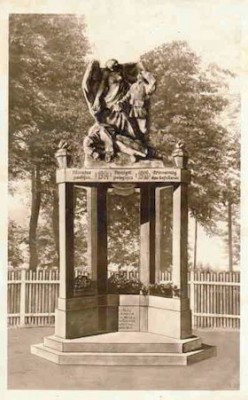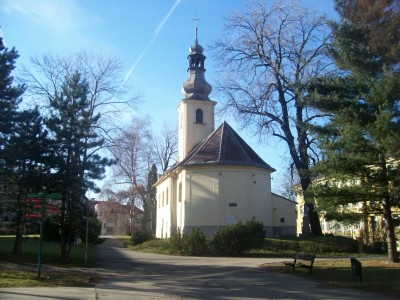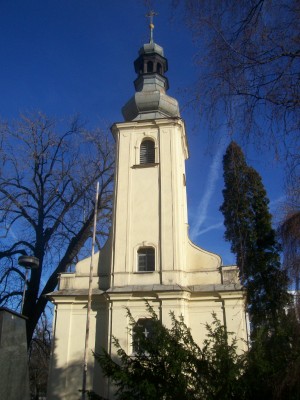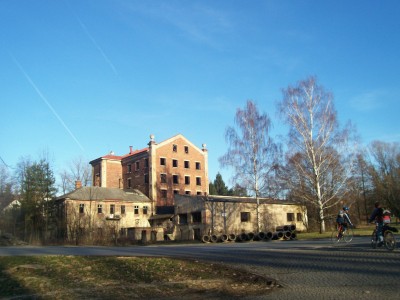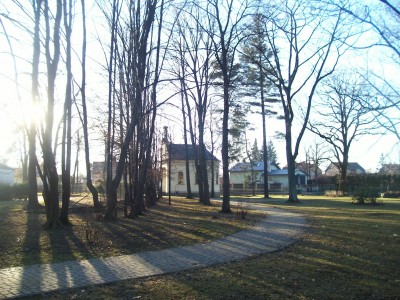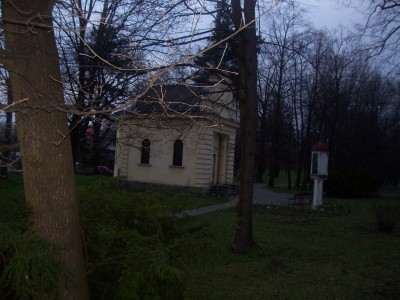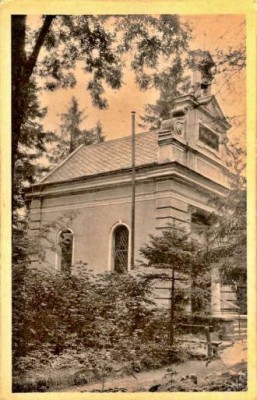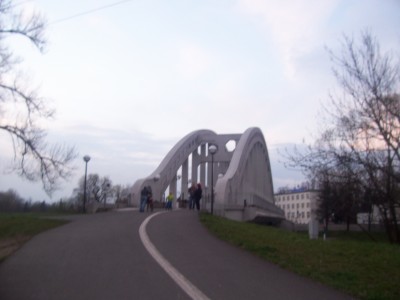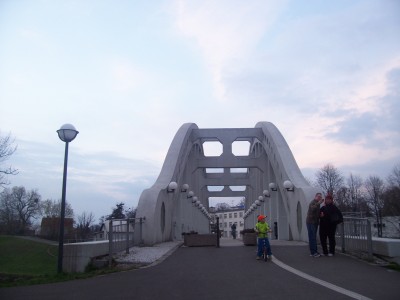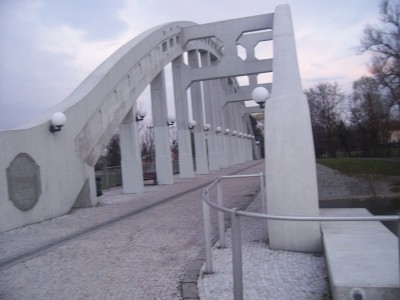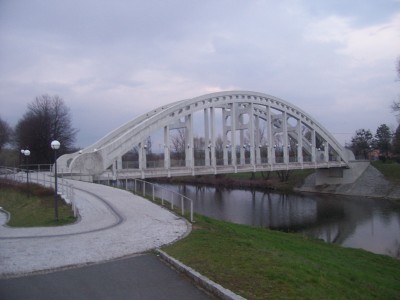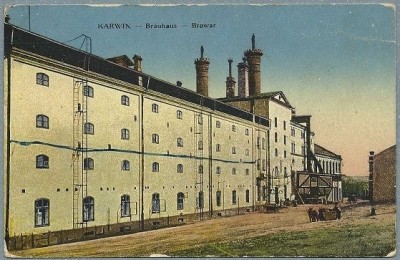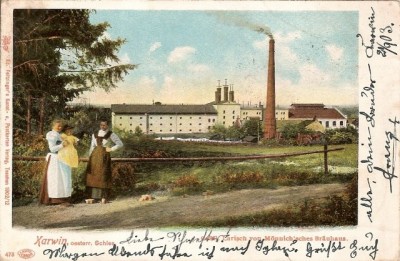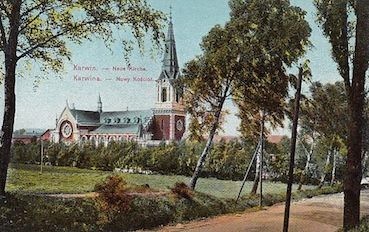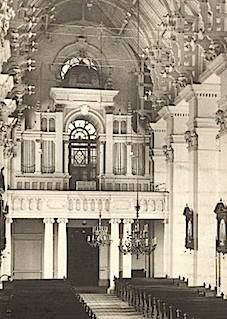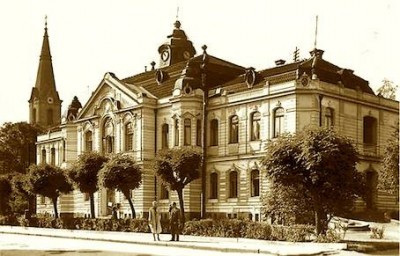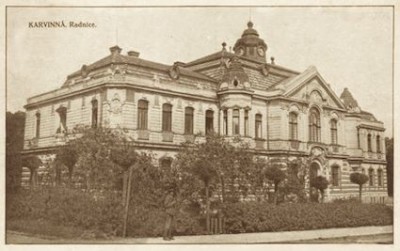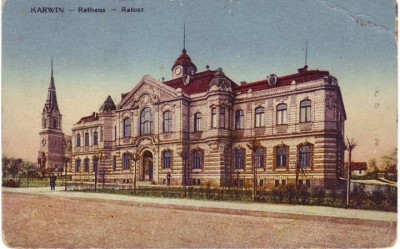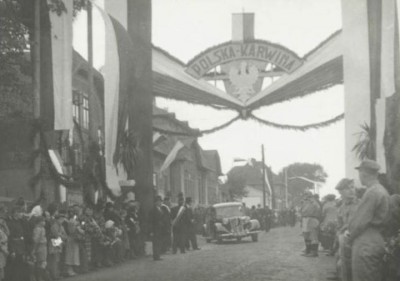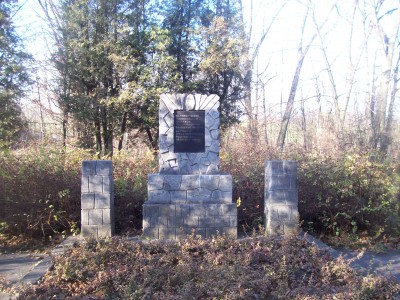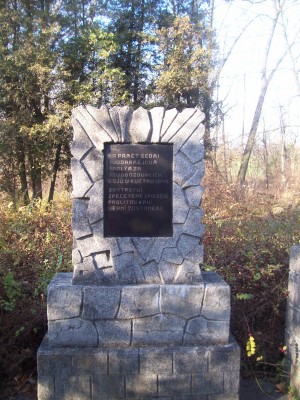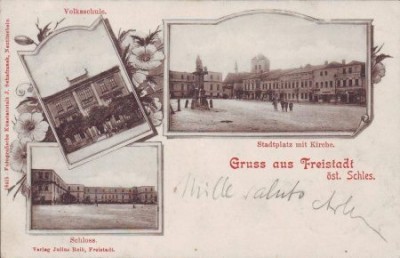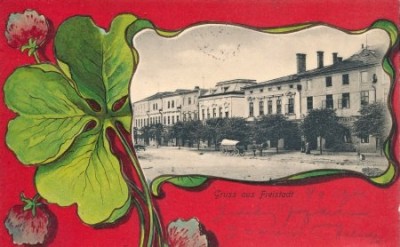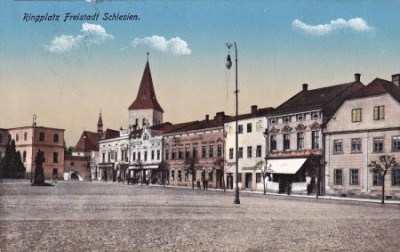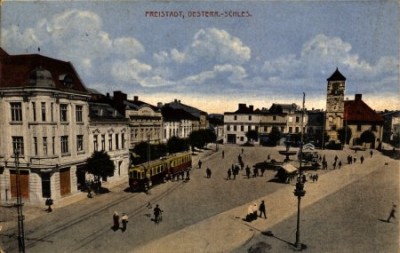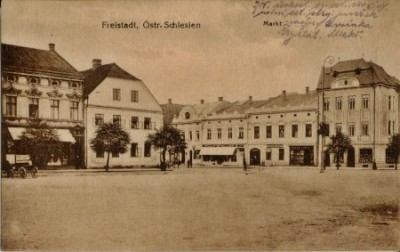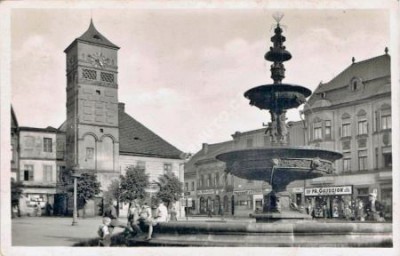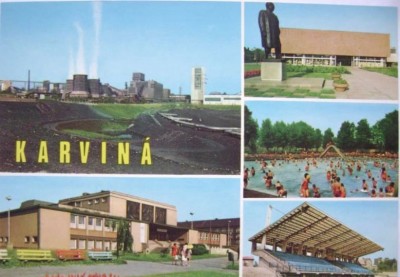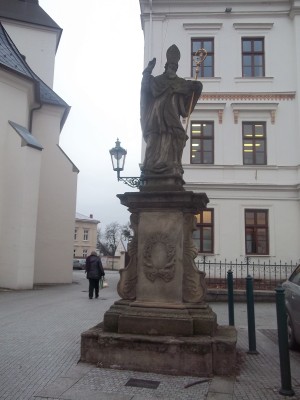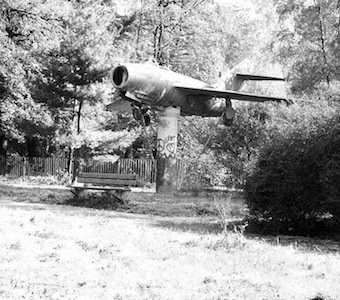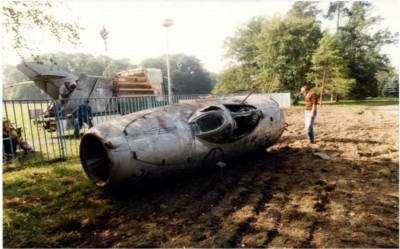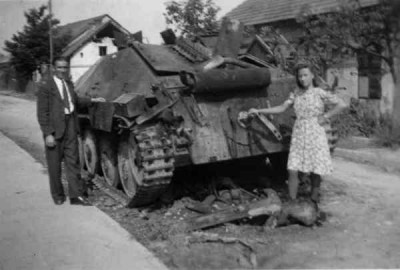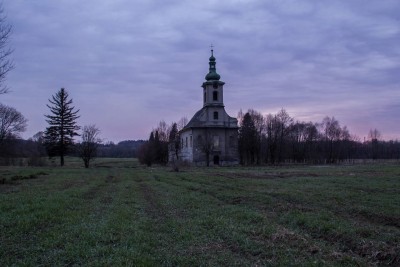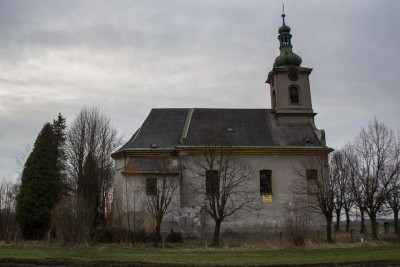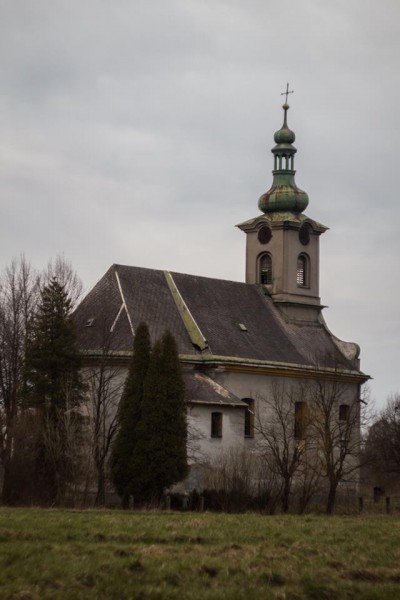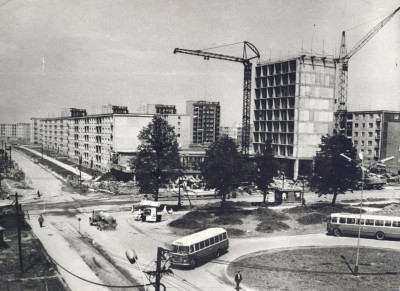| Název: Name: | Karviná | Karvina |
| Originální název: Original Name: | Karviná | |
| Další názvy: Other Names: | Karvinná Karwina Karwin | |
| Nižší územní celek: Lower Administrative Area: | okres Karviná | Karvina District |
| GPS souřadnice: GPS Coordinates: | 49°51'00.00"N 18°32'00.00"E | |
| Místní části: Local Municipalities: | Fryštát Doly Lázně Darkov Ráj Staré Město Nové Město Mizerov Hranice Louky nad Olší | |
| První písemná zmínka: First Written Reference: | 1268 | |
| Vojenské objekty: Military Objects: | | |
| Památky: Historical Sights, Places of Interest: | - | |
| Muzea: Museums: | - | - |
| Osobnosti: Personalities: | | |
| Dislokované jednotky: Garrisoned Units: | | |
| Průmyslové podniky: Industry: | | |
| Vlajka: Banner: | | |
| Znak: Coat of Arms: | | |
| Poznámka: Note: | - | - |
| Zdroje: Sources: | http://goo.gl/bMZgS | |
Karviná
This post has not been translated to English yet. Please use the TRANSLATE button above to see machine translation of this post.
V období 1.republiky součást politického a soudního okresu Fryštát.
Sčítání lidu v roce 1930: 22 317 obyvatel (z toho 9 461 osob národnosti československé, 1 417 osob národnosti německé, 9 806 osob národnosti polské, 16 osob národnosti ruské a 124 osob národnosti židovské).
Posádka byla ustanovena v říjnu 1920. Zrušena v lednu 1921
Jednotky nebo úřady umístněné v posádce:
III. prapor Pěšího pluku 31 (říjen 1920 – leden 1921),
III. prapor Pěšího pluku 40 (prosinec 1920 – leden 1921).
Zdroj:
VÚA Praha, fond Posádková velitelství.
J.Fidler a V.Sluka, Encyklopedie branné moci Republiky československé 1920-38, Libri 2006
Recenze knihy
Located in the original part of Karvinné, today the city part 2 the Mines. The church is known for their tilt off-axis, thanks to what is called the "Czech Pisa". The tilt is caused by mining influences. Because of this was reduced twice and the steeple of the church, up to today's "dwarf" form. The church is located two tombs, the old cemetery is located across the road. Nearby are located the remains of the mine Gabriela. Most of the other buildings now no longer exist, and even what little there is left is gradually disappearing.
The church of st. Peter of the Of is known under the term "oblique" church in Karviná, also is referred to as the Old church (Alte Kirche). Remained exposed to the year 1736 in the baroque style. Earlier in his place stood a wooden church of st. Martin, which is first mentioned already in 1447. Construction commissioned by a local nobleman Franz Wilhelm Larisch. The consecration (konsekrování) occurred up to the year 1759, when this is done vratislavský bishop Philip Gothard Schaffhotsch.
This regional rarity standing in the place where it occurred during the 40 years of the last century to the decline in the soil of 37 m, a decline caused the bow of the church of 6.8° south from the vertical axis. This tendency is visually very distinct. The church stands in the place of the center of the original city Karvinná, today the municipal part of the Karvina 2 - the Mines.
After the start of coal mining in 1874 was under it mined coal from 27 layers total power of 52.8 m (according to other information 46,82 m)
Before the main fronton of the church stands a stone statue of the Virgin Mary from the year 1861, is an example of folk sculpture. On the right side of the main entrance is located a stone cross of the 2. the mid-19th. century. Originally around the church square (or court) became the 12 statues of the apostles, today there are only three. Next to the church is located two smaller sacral buildings. One of them is the ancestral tomb of the family Fornerů. Inside the church belongs to the most valuable elements of the font from 1. half of the 15. Century and is still used. In the sanctuary is situated a valuable painting of the patron saint of the church - st. Peter of Of.
The church today is a testament to the former time, the quest for coal, regardless of the landscape, settlements, sights and especially the people. Just as a reminder of the time fortunately, the last and partly also as a repair, it was decided to save the church in the state at the beginning of the 90. years 20. the century was located. The church was the only significant building, which up to the present time from the former Karviná preserved and is reminiscent of the location of the city. His rescue took place in 1994-1995 and was financed by the mines Darkov and ČSA, static and construction work carried out by the firm Forti Ostrava. The rescue earned the administrator of the roman-catholic church rev Ernest lived up to. At the same time, from the year of 1999 began the restoration of the surroundings of the church and land reclamation. The surroundings of the church today is nicely adapted in a natural landscape style and to the uninitiated tourists operates up to idyllic. Nobody would have thought that even before the 40 to 60 years ago, there were několikatisícové a bustling city with two locks. After the reconstruction of this baroque single-nave building with the surrounding area from 7.12.2000 once again accessible. However, the tilt of the building has caused significant soil and the degree of degradation of the plaster on one of the sides of the object, together with some apparently mining the effects caused by damage, led to a further reconstruction. Was also conducted minor archaeological research.
Sources:
Vícha, D. – Szczypková, Even. 2007: Odkrywajcie Karwine : Odwiedźcie jedyny w your rodzaju : Krzywy kościól św. Piotr of Of. Karviná.
cs.wikipedia.org
www.karvina.cz.
Located at the cemetery in Karviná - 2 Mines, near the church of st. Peter of the Of, in the same cemetery are still mass graves of the fallen rudoarmějců and the victims of the mining accident and the rescue work at the mine, the unrra from the year 1924..
Located in the city of Karviná 1 - Chateau, he once was an independent city. It was originally a gothic church, which was continued in renaissance and baroque style modified. Located next to the Fryštátského the castle, with which it is connected.
The parish church of the Exaltation of the holy Cross is the oldest preserved building in the territory of the city of Karviná. Its origins are subject to the time of the founding of the city Fryštátu (now the city of Karviná 1 – Chateau) to the end of the 13. century. The first written mentioning, which is related to the church we have in the charter of 18. February 1377, this fundační charter of duke of teschen End mentions donaci altar of corpus christi and st. John the Evangelist, mentioned is also the provost of Jan.
The original gothic church was raised as jednonavová (single-aisle) of the oblong building on the plan of a Latin cross. At that time, was consecrated to the Holy Mary the Virgin. At this time it was the only brick building in town. Other buildings were wood-loamy structure with a stone base, possibly some minor masonry elements (fireplace, chimney, etc.). At that time still had a tower and a wooden bell tower was located next to the church.
The year 1511 was a fire in the city, the damage is nevyhly even the church. The bell tower was completely destroyed. There have been a total remodeling of the church, on the site of the ruined bell tower, at the north corner of the church, between the longitudinal main new and the north arm of the transept, was in the years 1515 to 1530 built rectangular high tower. Part of it is accessible by a spiral staircase, which is located in a cylindrical extension, which is outside their own construction of the tower, in the corner between the western wall of the tower and the church new. This staircase extends approximately to half the height of the tower. In addition, it was sometime before the year 1520 should proceed to the reconstruction of own building of the church. To amplify the disturbed stone wall of the presbytery the main navy. Both of these parts have been increased with regard to the height of the transept of about two meters. The sanctuary was again bridged cross the ceiling about six segments. In the south-east wall of the presbytery was built sanktuárium of the iron the renaissance fence bars. In the central part of the church, before the ceiling of the presbytery, remained vyklenut the triumphal arch, the later was made the new vault of the main navy. Virtually certainly at the time of these works was over presbyteriem built a wooden turret. At the time of the reformation, became the church of the evangelical, and held all of the functions except for the funeral, to those it was designed a new wooden church of the funeral of 1569 (today the church of st. Mark), which was built when the city wall near Teschen gate.
When he died in 1577 the owner Fryštátu Václav Gypsy (Cygan) from Slupska, was under the altar of the south chapel family crypt, in contrast, stone epitafium with a relief of a knight in armor, helmet and sword remained vezděné into the wall behind the door of the main entrance to the church.
Significant interference in the initial architecture of the church has set the completion of the moravian chapel in 1611. As the reason of its construction considering the linguistic disputes between the Czech and German protestants. It was built between the north-eastern part of the presbytery and the north chapel of the church. The walls of the chapel were amplified by powerful pillars and got this small extension of the form to agree with the architecture and the width of the presbytery of the church. His sanctuary has remained closed pentagonal closure. Rectangular nava remained spanned by a vault of two rectangular fields. In the frame of the eastern window, then was carved the year 1611. It is not known whether the site could be older chapel, which should be sometime around the year 1420. The original decoration of the chapel is not known. The year 1611 was the whole church and with a chapel paved with bricks. Then in the same year he was transferred from north chapel to the side of the altar of the main nave the image of st. Nicholas. In its place then was placed the image of the holy Cross.
Already in 1617, during the fire, the church lost the roof. The latter, however, has not been destroyed by fire, but charged to the concerns prior to the delegation of fire. The following year, broke out the thirty years war. When the period of the imperial army in 1620 under the command of a neapolitan general Spinelleho, his soldiers, the church robbed, while they stole a gold chalice and some other valuable items. When the city was in 1628 occupied by Danish troops, the church was again robbed. The soldiers took the next series of church equipment. In the same year, then came to the closure of evangelical churches, with the parish church was returned to the roman catholic church. 1645 the town was odstřelováno the Swedes, in which there was at least one hit and the church. The trail after the intervention of the artillery ball was in the corner of the church tower, but later this track usunuta in the repair of the church. The year 1673 on the main altar came the gothic image of the Virgin Mary. When he was then the church of the year 1677 repaired, was found 6 walled graves with the remains of the local clergy. In honor of the victory of the Polish king Jan III. Sobieski over the Turks at Vienna 1683, he was on the cross moravian chapel, which is located on the roof, placed a crescent moon with a star. At a time when the growing cult of st John, was a moravian chapel dedicated to this saint. In the altar then was placed the image of st. John of Nepomuk. The year 1747 then was out of the church, the foundation invested a monument to st. John of Nepomuk, which at first was situated above the lock and then was moved to the church garden. The fire that befell the city in 1781, the church greatly damaged. Was damaged or destroyed the greater part of the enclosure, and the heat was so great that they snapped and the two church bells. You have been re-cast opavským zvonařem Francis Stankem the year 1784. When it was pegged a third bell, who donated to the local municipality (this bell previously located in the town hall tower). The bell bore the inscription "the bell public law". The church then received from Marie, With the Chotkové, the dowager countess Taafe gold embroidered chasuble. When the fire was completely destroyed the wooden building of the rectory. She was rebuilt as a brick building in the years 1872 and 1873. For other changes in the particular internal space occurred the year 1792, when the new patron of the church became Jan Josef Antoni, count Larisch-Mönnich. He decided to in the ongoing redevelopment of fryštátského the castle in the empire style in the years 1792 to 1800, connect it with the church and build a manor oratory, in the place between presbyteriem church, and moravian chapels. The impetus was sure that the castle had a chapel. Castle with the church was connected to a brick bridge. This covered bridge or passageway is situated at the level of the floor of the castle. In the oratory is located four windows, three of which leads into the presbytery and one in the moravian chapel. Further, there are two doors. One concluding passage and the other leading to a wooden gallery, which is located at the southwest wall of the chapel. At the end is a staircase, which has a brick perimeter wall, but the spiral staircase is made of wood. Due to the poor condition they had to be 1798 vybourány all the ceilings and pillars in the presbytery and the main nave, were subsequently built new, in the years 1800 to 1801. The sanctuary was completed low konchou and two sails (?). The main ship remained reinforced three against each other to present the sails (?). The year 1804 was also taken to the demolition of the gothic ceiling of the south chapel of the transept. The new ceiling was built as a křížovo-ribbed vault with a variable ending. In the same year, he was cleared the ceiling of the music of the roofing with an oval mirror and uruchomione organs were converted to a three-part instrument. Further work also took place in 1805, when it was completed the main altar with a new retábulem, tabernáklem and visitors. This new altar got lunetový gzyms and a new picture depicting the crucified Christ on a large oil canvas. The lunette was then fitted with the image of God the Father, whose author is the professor of the viennese academy, academic painter Hess. Into the wall after ewangelijnej tronie the presbytery remained built a new pulpit with a canopy, which is accessible by a staircase from the moravian chapel. After epištolní side of the presbytery remained placed on a separate console, a new baptismal font on which is carved a relief showing the baptism of Christ. Newly raised was the marble tiles in the form of a checkerboard. Were made and new benches. This was the reconstruction of the church ceased and the church was dedicated to the Holy Cross. However, in the years 1812 up to 1813, there was another rebuilding, when was the apron of the sacristy with depositářem. This is a small two-storey building, which has a square floor plan. It is situated in the northeastern part of the presbytery. The vestry remained nakrytl low tarp (?) with a circular recessed mirror, in contrast depositář got the vaulting of the cross-ridge. When finishing the works the year 1813 was the space between the sacristy and presbyteriem revamped. Got relief Getsemaňská garden with color polychromií and iron fence. The war of 1812 were placed on both sides of the triumphal arch of the side of the altar, with gilded corinthian columns and lunetovými ledges. In the left side altar was placed the image of Saint Joseph of 1812. In the right side altar was placed the image of Saint Anna, also from the year 1812. The image of st. Nicholas was again placed in the north chapel. The year 1815 had the south chapel of the transept a painting of the Holy Jesus ' Heart, its author was Joseph Kacper Schneider, mayor Fryštátu. In 1817, has been renovated facade of the church, obscured was the main hallway and were made new stairs to the music kruchtu. Nakryty remained too antechamber of the sacristy. The same year, were the walls and ceiling of the south chapel decorated (painted) J. To. Schneider, and for the altar of the same chapel he painted a year later, the image of the Mother of God with the Baby. In 1823 there was another massive fire Fryštátu that destroyed a mighty city and the church. For the extent of the damage was in the countries of the Opava and Tesin established public collection. The fire completely destroyed the onion helm of the tower with the "gallery" also was destroyed by renewed hardwood signaturka over presbyteriem. Other facilities of the church, fortunately, was not destroyed, as the provost Josef Plasuj ordered his pronouncement in the garden of the church. Already in the fall the tower was roofed over in the form of a low tent (?) of stone. A year later, was built a new brick šestistranná signaturka, in which were hung two bells, the bigger one with the inscription "1617 after the fire" and the second "the bell of public law" was transferred from the main tower of the church. The year 1828 there were in the opavském zvonařství Francis Stanie cast two bells intended for the main tower of the church, and in 1844 to them was added the bell the third, of medium size, which was paid to the local provost and dean of the ThDr. Mateuszem Oppolskim. In 1850 they were on the side ledges of the main altar, placed the wood carvings of st. Peter and Paul, which he executed silesian carver Bernard Kutzer. During an earthquake (or perhaps the mining disturbance?) the year 1871 were severely damaged all three bells in the main tower of the church. Thus were cast the new bells zvonařem Square Hilzerem on the costs of Henrik count of Larisch-Mönnicha. Waxed also the voices for recovery cibulovitého roofing of the tower. In 1872 was drawn up a new project in the form of the church, when they should have been big changes to confess especially the tower of the church, fortunately, but this project was not implemented. The main tower of the church then got the 1910 high gothic cone according to the project of the archbishop's builder Schadeho. Further changes occurred after the mid-20th. century. 1952 he got the altar of the new retable and a tabernacle. After the sides of both columns remained placed gilded wooden carvings, along side the gospel of st. Hedwig and st. Barbora and the side of the nice epistolary of st. Adalbert and st. Jan Sarkander. In the framework of the renovation of the moravian chapel in 1966 was discovered in the frame of the north window the date 1611. Later in 1970 he was probitý big hole with the presbytery in the moravian chapel, carried out were plaster and painted decoration. When it remained preserved in an oval mirror the presbytery of the older frescoes on the topic of Wonder of the multiplication of bread, the ornamental decoration of the triumphal arch, oval mirrors music of the roofing and the cartouches of the two chapels of the transept. In the north chapel remained zamalováno gothic ceiling with vaults and 1975 there was moved stone epitafium Václav Gypsies of Slupska. It was been sealed off into the wall next to the gothic portal of the chapel. The year 1977 in the context of passing the plaster under a new project painting the decorations were all earlier painting usunuty, in stropových oval mirrors on the facade of the triumphal arch were painted new frescoes with biblical themes – the Lord of the belching and the Lord of the shepherd, their author or authors are not known. Painted out stay also older illusory marble paint decoration the pillars of the presbytery and the main nave, the ceilings of both chapels, the transept and the moravian chapel. All the walls remained painted yellow and were given the mismatched lamps (lights). It is clear that these interventions reduce the value of the monuments. Otherwise it was the church transferred a few images and possibly other inventory from the middle of a demolition of a New church from the Karvina 2 – Down. In contrast, it is very well to remain carried out restoration work. The church has undergone several different large-scale repairs, got new bells. It was recently fixed part of the roofing and facades. The reconstruction was also part of the interior. In the framework of the reconstruction of the castle was repaired and the bridge connecting the castle with the church.
Sources:
Rebrová, And. 2006: Kościól farny under wiezwaniem Podniesienia Św. Krzyźa w Karwinie-Frysztacie. Karviná.
http://www.farnost-karvina.cz/
http://www.hrady.cz/?OID=3387
cs.wikipedia.org.
The historic building originally renaissance town hall from the year 1504, is located on Masaryk square. Historically the most valuable is the renaissance tower with a clock.
The first written mention of the Fryštátu we have from 18. February 1327, but only the year 1377 is supported by the existence of the senate, i.e. the city council, which had 4 counselors, and lawyers (consules, iurati). At their head stood the mayor. The senate had jurisdiction, and, together with the vojtem formed the municipal court. Drawing up contracts and other important documents was in charge of the town clerk. The oldest written mention we have of the city clerk Hank Greifwaldovi of Fryštátu to the year 1386. Other changes brought the privilege of the town by the prince of teschen Boleslawa II., the so-called privilege of Bolek. This was released June 2. December 1447, he was in it, outside of the rights of the city and the citizens, also the resolution concerning the leadership of the city. Of the city's rights it is necessary to mention the right of the higher judiciary. It was set up so as to not undermine the rights of the prince. He was appointed the office of the hereditary vojta, that formed together with counselors and lawyers of the municipal court. This court took out even a capital judgments (those performed těšínský kat). Vojt was in the hierarchy of the city administration subordinate only burmistrovi. Under the end of the 15. the century originated on the Fryštátě municipality, of which 1496 were three councilors (councilor?) and at their head stood the mayor. This office was interested in the administrations of economic, accounting control (if we can at this time call), the management of the property of the city, supervision of municipal treasury and custody of the keys of the city gates. All of these organizations úřadovaly either in the house burmistra or in one of the houses of the councillors. Very likely, we can assume only the existence of a possibly free-standing pillory and šatlavy (prison), whose location is not clear. The beginning of the 16. century this condition has probably really did not suit, and so they acceded to the construction of the city hall building, however, we must here for the reasons representative. The first written mention of the building of the city hall, or rather of its beginning, we have of 22. march 1504, when těšínský prince Kazimierz II. bought for 60 Hungarian gold house of the burgher Jaszka Szlosara (Jaška Šlosara?). He subsequently sold to the city for half the price, and for the purpose of construction of the city hall. The first structure was a wooden building with a stone retaining wall (indeed, like the other houses in the city, with the exception of the church). This building was located in the southeast corner of the square. However, already in 1511, this building burned to the ground. Probably directly on the remains of the stone foundations was then in 1520, built a new renaissance town hall, already bricked. However, work on the construction done up to the year 1569. The construction of such as disturbed the threat to the Turks, and so were given the preference to the city walls, of which the improvements was completed in 1564. In the years 1564 to 1569 was then under the government of teschen prince Friedrich Casimir (Fryderyk Of), which was by the way the last těšínským Piastem, built on the northern corner of the square high square stone tower. It was roofed by a double dome, with an offset and a wooden "walkway" (more or less panoramic terrace), which was placed under the helmem towers, around the perimeter of the wall. This way you could get into a room the guardian, which was connected to his apartment on the first floor of city hall. Under the dome was suspended a bell of public law, that rang, when he was a convict discharged on szafot. Later but this bell got the parish church as a gift. On the first floor of the tower is located blind window, into which was placed the coat of arms of těšín Piastow. To the corners of the tower then put the chain of the criminal law, which served as a pillory. On the first floor of the tower then was the round-house. On the floor of the town hall were the office of the city clerk, municipal archives and a meeting hall of the city council and the court. Torture chamber with the necessary proprietami to the performance of the questioning, was located on the partéře (mezzanine). The performance of absolute punishment was not frequent, e.g. in the years 1646 to 1649 was executed only three times. The right of the sword then had Chateau up to the year 1756, when about this right in the framework of the reorganization of the judiciary came. The town hall of course had the appropriate symbols, which both represented the city and then also have been necessary for the official performance (to be issued by the charter to be valid). It was the city coat of arms and the city seal. The oldest seal dates from the year 1529, the oldest charter with the seal of the then from the year 1559. The symbolism of the seal and the coat of arms is the same – half is located half piastovské eagle, on the other, then lime shamrock. The oldest surviving color coat of arms we have through out the year 1660. Located on the city's closet. In 1611 the town and the town hall burnt down. The extent of the damage city hall is not known, but have survived with the iron door carrying the roads damage from the fire. In 18. century had town hall tower roofing onion helmem and probably exceeded all the other buildings in the town including the church. The state of damage after the fire in September 1781 are not known. In contrast, the fire in April 1823 was devastating. The city had to proceed to rent of house no. 29, which belonged to Francis (Franciszkovi) Falharovi. Here resided the municipal authority of around 10 years. Damaged the town hall building was fixed only in the years 1835 to 1837 in the classical style. Because of this remodeling was the main front facade passed on the street the town Hall (Ratuszowa). The main gate with a profiled sandstone portal got a triangular tympanum on which is located in the middle of the oval with the city's color-coded polychromovaným coat of arms and the date 1605. The coat of arms has a late renaissance shield. On the right blue field there is an eagle (his half), which looks at the right side, and has red armor. On the left the red box is a green shamrock. Above the shield is the figure with the crown, which has on both sides of this crown and the keys to the gates of the city, with the date 1605. The tower, which was badly damaged by fire, was reduced by about 2 floors. The roof had the shape of a low pyramid with a banner with the date 1823. Under the roof remained hung two bells, and the tower got hours. The city guard remained room on the first floor of the tower, which is connected with the living area on the first floor of the building of the town hall. The former round-house became a place of occasional residence of the troops. However onedlouho, so for about 15 years after the establishment of the political and judicial district Chateau, originated the new office, which he rented to his exposure to city hall. The municipality of the city transferred to the newly constructed building, no. 89. Especially the court part of the county Chateau you require a larger space, and therefore it was taken in the years 1855 to 1856 to the remodeling of the town hall and to her breast. In 1910, after the construction of the district court, occurred moving the relevant parts into a new building and 1929, when it was built the new building to the district office, the building once again returned to the city magistrate. The year 1936 was the room of the old court retooled fryštátským builder Anton Wolf. Vybourány were the first room of the prison, but also other valuable parts. The reason was the enlargement of the offices. There was also the installation of central heating. In the years 1994 to 1997 then the city hall was expensively reconstructed and after the reconstruction, is here returned to the main office now the statutory city of Karviná.
Sources:
Rebrová, And. 2006: Ratusz from renesansowa wieźa w Karwinie-Frysztacie. Karviná.
http://www.hrady.cz/?OID=4596
http://cs.wikipedia.org/wiki/Karviná.
Monument to the fallen from the years 1914 - 1918 in Czech and Polish language version. Located in the road Karviná - Ostrava..
Filial church, originally invited as the Burial dates from the year 1774, before in his place stood a wooden protestant church from the year 1569. That was after the thirty years ' war, seized by the catholics. You put it in the year 1773 demolish and in its place then a church was built current. He had a fire in 1823, then was renovated and got its present classicist form.
The emergence of the church of st. Mark is coupled with the religious reformation in the region at the time of 16. century. Evangelicals then became a wide range of the population including the těšín Piastovců. 1562 issued Václav Adam for Chateau on the single confession of the evangelical faith, to hold office or to learn a craft, could only evangelicals. A year later passed the estate Chateau without Bílska and Skočova to his son, Friedrich Casimir. Chateau was the seat of the fryštátského the principality. 1568 called the evangelical pastor James Preisse from Brzegu and a year later, was left at the gates of the city, in the middle of the new cemetery to build a new evangelical church. This is referred to as a burial church. There were only a requiem mass, whereas to the other purposes served by the parish church of the Assumption of the Virgin Mary (from 1805 until today, the Exaltation of the holy Cross). This was a smaller wooden building. It is almost certain that when the year 1617 was a fire in the city, must he also suffer some damage. After the announcement of the Renewed establishment of the provincial 1628 occurred to the closure of the church, because he was a non-catholic. The year 1654 was evangelíkům withdrawn and fell into the hands of the catholic church. Church then we have shows on For the engraving "a View of the Chateau" from the year 1735, in the work of the "Silesia in Compendio teu Typographia Schlesiens". However, the church gradually fell into disrepair and was a vicar Augustine Fojcika 1773 removed. Already the following year there was built a new brick filial church, which is fully subject to the parish church of the Assumption of the blessed Virgin Mary. This church was built by the contribution of the dominions and of the countess, With Chotkové, widowed Taaffové, who became the patron saint of the church. It was a single-nave building with a three-sided conclusion of the presbytery. The roof was covered with shingles and had a low tower with a bulbous roof, lantern and finial. The interior was plochostropý and wooden beams were pulled through up to the perimeter of the outside walls, where they were fastened with studs and zabíleny lime. 15. September 1781 he suffered a church fire in which was destroyed a roof and suffered even after the page static. The church put the fix pastor John Grinder of the contribution of the countess, With Chotkové. Damage then further spread the earthquake of 1786. Another fire then very seriously damaged the building 5. April 1823. This led to his major refurbishment. Recovery took the builder to Lawrence Miller, who for the most part these work also funded. The church was increased by 1.5 meters and it especially odkopáním soil all around the perimeter of the building, brickwork was cleaned and plastered. Got a new crown ledge, on which were laid the new roof trusses. Restored whether or not the tower was, she got the year 1823, two new bells that were cast in Ustroni in zvonař Jan Zukowského. The original beamed ceiling, has been replaced by a smooth flat ceiling, the choir loft was then spanned by cylindrical vaults. The ship has broken up a new window internally to the segmented compressed, from the outside of the vaguely polygonal arched. The presbytery remained rounded off with a three-sided conclusion. On the wall in the north-western wall, was built of small tetrahedral sacristy. Newly also was carried out the decoration. To increase the presbytery was placed a gilded altar, which consisted of a retable with tabernáklem for from the monstrance and visitors and the bench. The altarpiece shows St. John in the desert, the author is unknown. His donor was a new patron of the church Henry Larisch von Mönnich. According to some information the picture had originally come from the family tomb of the Larisch-mönnich aristocratic family. Completion of the work and the consecration of the church took place in 1826. The year 1828 was for a music kruchtu made a new harmonium in vienna c. to. the court varhanáře T. Kotykiewicze, there has entered a new fryštátský dean and parish priest Josef Alois Got. The decoration of the church then the enriched cycle oil paintings of the Cross by Josef Kaspar Schneider, who was fryštátským the mayor and these images painted a gift for the vicar ThDr. Matthias Oppolského the year 1818. Then he was, at the instigation of the spiritual administrator of the P. Joseph Plasuna, taken over the main altar picture of St. Mark's from Gabriel Preisse. This image from 1863 also probably contributed to the consecration of the church of this saint. From the year 1864 comes from tombstone P. Joseph Plasuna with a Latin inscription, that was after his death to his wish and put him into the wall, to the right of his side entrance. Another tombstone found in the church, is a baroque stone tomb Benigny Haugwitzowé of Biskupice, married the countess Gašínové, the owner of the town and manor of the Chateau from the year 1674. This tombstone is in the church located since 1995. At the northeast wall of the presbytery of the church there is a neo-baroque stone cross, which in 1879 replaced the cross a wooden. The southeast wall is located neo-baroque color polychrome sandstone sculpture of st. Florian from the year 1898, this is a symbol of the protection of the city from fires, which in the past often plagued. The church underwent repairs in the years 1996 to 1997 and 2014. Among a number of repairs and equipment series for the new furniture were also purchased three new bells of st. Marks (220 kg, the tone of the d), st. Francis (150 kg, the tone of the email) and st. Florian (100 kg, tone fis), which were cast in bell-workshop Felczynski in the Polish Przemyszlu. Were consecrated 20. September 2014 bishop Francis Lobkowiczem.
Sources:
Rebrová, And. 2006: the Filial church of st. Mark in Karviná-Fryštátě. Karviná.
Roman catholic parish of Karviná, 2014: The Filial church of St. Mark's square in Karviná. Karviná.
cs.wikipedia.org.
The building of the mill dates from the year 1895. Voučastnosti undergoing renovations in order to create the educational center.
Source:
http://www.hrady.cz/index.php?OID=5944.
The chapel of st. Anna, located in the spa area, today nepoužívanému the children's pavilion at Karviná - Darkov. Exposed to the year 1902 in the historical style, while the chapel is located marian wayside.
Sources:
https://www.hrady.cz/index.php?OID=8903.
Historický pohled na kapli sv. Anny Zdroj: https://www.facebook.com/124959440868684/photos/a.206335436064417.57222.124959440868684/907929855904968/?type=3&theater
Příloha je viditelná až po registraci/přihlášení
Functionalist bridge from 1925, blown up 1945 of the German army, then repaired, after the flood of 1997 increased, the closed transport shipment (the only pedestrian and cyclists) and fixed.
Source:
http://www.hrady.cz/index.php?OID=6117.
New church replacing the previous church of st. Barbara in the Meadows of poddolované part. Modern building with a floor plan reminiscent of a drop. A cornerstone of the canonized John Paul II. in Velehrad on 22. April 1990, the church then consecrated 11. November 2001 Mons. František Václav Lobkowicz, bishop of Ostrava-opavský..
The Existence of the brewery started in 1861, here-brewed ale was famous. Of the reasons for the undermining is joined to the overall sanitation in the years 1952-1954..
Exposed in the years 1893-1897 according to the design by Bohuslav Black. The implementation of the construction was carried out under the leadership of ing. Hugo Königsbergera. The church received a sandstone base and on it was then further built fair-faced masonry. The length of the church amounted to 66,2 m, width 34 m. Not a brick or a wooden ceiling, but the design of the wooden truss was obedněna planks, which resembled a dome. Capacity could the church accommodate 4,000 worshippers.
The year 1898 was taken the main marble altar with a statue of st. Henry, on the two side altars, which had paintings of st. Francis of Assisi and st. Barbara, and eventually the organ. In the years of 1900 and 1902 were taken the other two altars.
Already shortly after completion began to show mining influences, though not yet somehow vigorously. Still had to proceed to a few corrections, of which the largest took place in 30. years of the 20th. century. 29. November 1951, the church was ranked by the State heritage office in Brno in the list of monuments. However, the reconstruction of the church virtually did not invest and the autumn of 1954 to the damage caused by the mining activities began to clearly manifest itself. In the spring it was decided to close the church for public use. Furthermore, they could only use the side chapel as she had her own input. Gradually it began with the removal of valuable furniture. Finally, for reasons of the damage caused by mining influences acceded to total sanitation 1959. The final demolition took place in the fall of 1960. Part of the street furniture is located in the parish church of the Exaltation of the holy Cross in Karviná - Fryštátě. The organ is located in the church of st. Peter and Paul in Albrechtice.
Source:
www.facebook.com.
Demolice kostela Zdroj: https://www.facebook.com/photo.php?fbid=1230961416930796&set=g.644028389009438&type=1&theater
Příloha je viditelná až po registraci/přihlášení
The town hall was built in 1907. During the occupation, was decorated in the "národněsocialistickém" style. Then re-used. Because of the undermining took place redevelopment in 1963..
In the context of the other consequences of the munich agreement, were the territory of the Czech Těšín and a smaller part of Slovakia, on the territory of Orava and Rather be referred to the Republic of Poland. This territory militarily occupied in the first October days. On this occasion it was organized a number of military parades, in the lavish decoration of the cities where these events take place..
Fryštátské náměstí Zdroj: https://www.facebook.com/124959440868684/photos/a.576013132429977.1073741825.124959440868684/576013295763294/?type=3&theater
Příloha je viditelná až po registraci/přihlášení
Přehlídka na fryštátském náměstí Zdroj: https://www.facebook.com/124959440868684/photos/a.576013132429977.1073741825.124959440868684/576013259096631/?type=3&theater
Příloha je viditelná až po registraci/přihlášení
Slavnostní defilé polského vojska na fryštátském náměstí Zdroj: https://www.facebook.com/124959440868684/photos/a.576013132429977.1073741825.124959440868684/576013272429963/?type=3&theater
Příloha je viditelná až po registraci/přihlášení
Fotografie dětí (za povšimnutí stojí chlapci v uniformách) s příslušníky vojska a nejspíš politickými představiteli Zdroj: https://www.facebook.com/124959440868684/photos/a.576013132429977.1073741825.124959440868684/576013362429954/?type=3&theater
Příloha je viditelná až po registraci/přihlášení
Přehlídky se účastnily i různé uniformované spolky i se svými prapory, zde zřejmě horníci Zdroj: https://www.facebook.com/124959440868684/photos/a.576013132429977.1073741825.124959440868684/576013332429957/?type=3&theater
Příloha je viditelná až po registraci/přihlášení
Defilé polských tančíků nejspíš TK-3, zdá se že během přehlídky i pršelo Zdroj: https://www.facebook.com/124959440868684/photos/a.576013132429977.1073741825.124959440868684/576013429096614/?type=3&theater
Příloha je viditelná až po registraci/přihlášení
Defilé jednotky s bojovou zástavou, za povšimnutí stojí výzdoba radnice a ulice Zdroj: http://www.fotohistorie.cz/FullFoto.aspx?photoID=30652
Příloha je viditelná až po registraci/přihlášení
Slavnostní proslov vysokého polského důstojníka za přítomnosti řady dalších důstojníků a starosty Dr. Olszaka Zdroj: http://www.fotohistorie.cz/FullFoto.aspx?photoID=30654
Příloha je viditelná až po registraci/přihlášení
The building of the water tower, today, unemployed of 20. years 20. century. The tower of circular ground plan with 6 floors, of eur 39,4 m, with an average of 11.4 m. the reinforced Concrete structure with cihelným masonry. The tower got on the postage stamp of the Czech post.
Sources:
http://www.hrady.cz/index.php?OID=4197.
Vodárenská věž v Karviné na známce z roku 2007, v pravo FDC, autor Jan Kavan Zdroj: Katalog známek České republiky za rok 2007.
Příloha je viditelná až po registraci/přihlášení
Náměstí ve Fryštátě (patrna je menší část budovy zámku (vlevo) a věž kostela) z roku 1908
Zdroj:
www.facebook.com
Stará pohlednice náměstí ve Fryštátě z roku 1939, v popředí kašna v pozadí radnice
Zdroj:
www.facebook.com
Záběr z doby okupace na tehdejší Adolf Hitler Platz, na vrcholu věže radnice si lze povšimnout výzdoby v podobě hákového kříže. Za povšimnutí stojí rovněž tramvaj s příšlušnou infrastrukturou a v bloku domů s radnicí dům krajní dům vlevo, který dnes již nestojí Zdroj: https://www.facebook.com/photo.php?fbid=657912624351676&set=gm.1005032059575734&type=3&theater
Příloha je viditelná až po registraci/přihlášení
Staré Město Zdroj: https://www.facebook.com/photo.php?fbid=1085704208107392&set=g.644028389009438&type=1&theater
Příloha je viditelná až po registraci/přihlášení
The newly renovated monument to the fallen (most likely originally from the years 1914-1918 and only later 1939-1945), located on the left bank of the river, Alder, near Darkovského bridge. Here today the other buildings are slowly disappearing due to the mining activities, so the monument is quite alone..
Stav letounu někdy v 90. letech Zdroj: https://www.facebook.com/mestokarvina/photos/a.483385001719778.107366.119028538155428/483385028386442/?type=3&theater
Příloha je viditelná až po registraci/přihlášení
Of Karviná, there was no heavy fighting, more after the break queue in the Ostrava - Opava operations, there have been isolated clashes between the retreating Germans and postupujiící the Red army. The germans in the process was fired into the air such as the railway bridge over the Olza..
Přestože nedošlo ke kdovíjak těžkým bojům zůstal např. v jedné z karvinských částí (snad Staré Mexiko nebo Nový Jork) tento zneškodněný Hetzer (vyfoceno po válce)
Zdroj:
www.facebook.com
The current cadastre of the city of Karviná, there were in the recent past the four locks. In the present days we survived only lock in Fryštátě. He's still in the early 90's. years 20. century served MNV, then was gradually restored and is now used as a cultural monument. While Old castle in Karvinné (today Karviná 2 – Mines) and New lock in Solci (also called Solca, today also Karvina 2 – Mines), they had to be demolished because of damage by mining influences. In contrast, the last lock in Paradise (today Karviná 5 – Paradise), was demolished in 1980 due to neglected maintenance and the fire, which has been 1976, and this despite the fact that originally they planned to repair and use for cultural purposes of the city. The place where the castle used to stand and adjacent to it park, has become part of the park of the hospital.
Source:
Musil, F. – Placek, M. 2003: Defunct castles, palaces and fortresses of Moravia and Silesia. Prague..
Chapel dedicated to st. Anna is located in the former village of Paradise, today the city of Karviná 4 - Paradise. Near is the monument to the victims of fascism (in the house of PZKO).
Source:
cs.wikipedia.org.
To this day, is us, as it appears, not preserved anything from the plant fortifications, or rather of the stronghold Fryštátu, once a separate city, today the urban parts of Karviná. Of course, it is quite likely that part of the fortifications has been preserved under the ground. The actual fortifications and showing a Part of the gate we have at least one historical depiction of the town. However, the actual fortifications seem not sophisticated, probably the city did not except the walls, the ditch on the north side of the city and the Lower and Part of the gate, no other elements of the fortifications. Should be noted that the fortifications belonged to costly buildings, and require maintenance, otherwise hasn't been used and its value has declined.
Source:
Rebrová, And. 2006: Ratusz from renesansowa wieźa w Karwinie-Frysztacie. Karvina..
It is located in the undermined Karviná - Louky area, the surrounding buildings have been demolished. The church has been consecrated and is locked.
Sources:
Rebrová, A. 1993: Karviná. Olomouc.
Introduction
In order to understand the history, development and other circumstances concerning the now statutory city of Karviná, we need to get into the issues before discussing the city itself, so that we can understand what the city actually is, as its development has been somewhat complicated.
The way we understand the Statutory City of Karviná today, we mean in total nine parts of the city, numbered from one to nine, and in sequence, these are Fryštát, Doly (once Karvinna), Darkov, Staré Město, Ráj, Nové Město, Hranice and Louky (or Louky nad Olší). The town itself can be characterised as a development consisting of historical buildings, rural-type or similar buildings, advanced urban development, consisting today mainly of parts built in the style of socialist realism (the so-called "sorely") and typical prefabricated housing estates, which are sporadically supplemented by mostly single family houses. The whole of the residential development is then closed off by a development close to the so-called 'satellite estates', if we ignore the end of the construction of prefabricated apartment buildings, only one larger residential building was built in Karviná after the Velvet Revolution. The whole complex is then complemented by a number of buildings that stand out from the development itself, whether they are various department stores, schools, health facilities or prisons, for example. There are also a number of industrial complexes which are currently in a variety of uses and are of variable age and design. These are mainly the former panel factory, Kovona, a set of various manufacturing companies in the Nové Pole industrial zone and last but not least the complexes of the used but also closed deep coal mines, which are a distinctive landmark of the town, especially its surroundings. Outside the built-up urban area, there are parts of the city that have succumbed to destructive changes due to mining. These are mainly the old Karviná, which has practically completely disappeared, now called Karviná 2 - Mines, and the town districts of Louky and Darkov have been considerably altered in terms of the extent of development, and a similar fate is expected in the future for the Old Town. On the other hand, due to social reasons (depopulation and theft), a smaller part of the New Town was redeveloped. The communication network that shapes the face of the town cannot be forgotten, it is a series of roads and railway lines, the most important of which is the so-called Bohumín-Košická railway. These roads and railways are also made up of a number of bridges, some of which have architectural or historical value (e.g. the Sokolov Heroes Bridge). Finally, we cannot forget about the natural conditions outside the small watercourses, especially the Olše (or Olza) River stands out, and the greenery is also rich, consisting of fields, forests, large and small parks, but also small urban greenery among the urban buildings and, last but not least, the gardens of family houses. The quality of the environment is varied. For example, the forests are made up of relatively healthy but also rather scrubby trees on the mine tailings. There are also a number of monumental trees in the town.
Historically, Karviná has been somewhat more of a nut. If we look into the historical annals, we can find the oldest historical references connected with Fryštát, for example, from the beginning of the 14th century. Many other present-day parts of the town are most often mentioned in the Middle Ages. However, for most of the first half of the 20th century they were still separate entities, most of which had the character of a village. The very first unification took place at a time when the territory of today's Karviná was incorporated directly into the German Third Reich. This happened in 1944, the resulting unit, consisting of Fryštát, Karvinna, Darkov, Ráj and the Old Town, was called Karwin-Freistadt, but after the liberation (or not long after) this union was abolished. However, as early as 1948, Fryštát, Karviná (Karvinna), Darkov, Raj and the Old Town were reunited to form the town of Karviná. Only with this did the history of Karviná actually begin to be written, although it cannot be said that the preceding events were unrelated. Therefore, I will deal with the individual parts of the city individually, because although these municipalities have more or less influenced each other, they have only been together as a whole for a short time. It is necessary to mention the beginning of the modern housing development started in 1946 in Nové Město and continuing especially in Mizerov, Hranice and Ráj.
Name of the town
It can be said that the settlement, the political administration, as well as a significant part of the cultural and social life is concentrated around the urban part of Fryštát, and yet the town is called Karviná, although this original part is located rather on the periphery and if it were not for some important roads and some mines, it would be defacto a worthless locality, since most of the production, residential, cultural, administrative and other facilities and values have practically disappeared here in the last few decades, with a few exceptions. Thus, the town should logically be called Fryštát rather than Karviná. For example, K. Kuča, who published an impressive work on Czech towns and townships. However, people are already familiar with the name of this town and practically and theoretically this matter is not solved.
Historical development
The history of contemporary Karviná begins in 1948, the year of the so-called "Victorious February". It is also the time of the beginning of the purges and the beginning of the first five-year period. At that time, the repair of quite a few war damages was underway. The development of the town and its surroundings was closely linked to engineering, but mainly to coal mining. This process had been going on here for a long time, as it had been mined since 1794. However, the new political situation that arose here led to the promotion of heavy industry and the highest possible output in production and mining. The development of the mines in particular was therefore noticeable. Hand in hand with this, some problems began to emerge. Although the mining industry was gradually modernised, the increased demand for hard coal led to a greater need for miners. They became a kind of selective caste, gradually acquiring certain privileges. On the other hand, although this cannot be attributed to this period alone, the desire to obtain black coal gradually led to ever-increasing mining damages. Thus, for example, a part of Karviná's new castle in Solc, which had barely been repaired after it burnt down during the war and was put to use as a health centre, was demolished not long afterwards, in 1953, precisely because of the damage caused by mining. Karviná, or rather the Czechoslovak state, acquired much of the former property of the Larisch-Mönnich family after that year. It had been confiscated from them already in 1945 on the basis of Benes' decrees. The list of property would certainly be extensive, especially the 4 castles, the brewery and the mines should be mentioned. While the mines continued to develop, other parts of the property continued to decline. The brewery was very famous for its good beer, and if we look at the wider surroundings, there were other larger breweries in Ostrava or Opava, and others even further away. Nevertheless, due to mining influences, demolitions began on the brewery site as early as 1953. This brewery was then replaced in the region only in the 1970s by the construction of the Radegast brewery. Of course, it is not possible to follow the development only in the old Karviná, incidentally already called Karviná 2 - Mines, but the development here significantly influenced the development of the city. As mining grew and the number of workers increased, it was necessary to have sufficient accommodation for them and sooner or later for their families. The construction itself, e.g. in Nové Město, had to be adjusted not only to accommodate the increasing number of new residents coming to work, but also to cover the housing losses in the slowly disappearing Karviná. However, this does not mean that all building activities there ceased, only that they were significantly reduced. At the beginning of the 1950s, the town was only reduced. In the early 1950s there were 1567 descriptive numbers in the Karviná 2 - Doly district, which, apart from non-residential buildings, represented 5960 housing units, of which 4605 belonged to individual factories. It is not possible to generalise that all these buildings were in poor condition or otherwise inadequate; indeed, some isolated buildings have only recently been demolished, and some, although no longer numerous, are still standing. In general, however, most were in a substandard, if not outright dilapidated, condition. The mining influences were a significant factor, but also the age of the houses, and last but not least, we cannot simply forget the fact that many houses were already inadequate in terms of housing requirements (shared sanitary facilities for several housing units, etc.). In spite of all the difficulties mentioned, the dying of this part of the city was not yet so noticeable. It was decided to build a few workers' colonies or hostels, based on buildings having a short life span in areas where the damage from mining influences was not yet so pronounced. We are talking about three colonies of so-called "Finnish houses" and 22 dormitories built before 1953. At least one "Finnish" colony existed relatively recently or perhaps still exists. This temporary solution was chosen as an option until the new settlements were built. However, the first Finnish houses were demolished as early as 1960. However, a number of other more important and more prominent buildings have also disappeared. Apart from a few maintenance or rarely reconstruction works, it can be said that the construction in the area has been concentrated on the transport networks and individual mining complexes. A similar fate befell an important part of the village of Louky a little later, when the entire historic core was lost, and today there is only the abandoned neo-Baroque church of St. Barbara. Darkov suffered a similar fate, although there is a significant difference between the part on the left and right bank of the Olše River. The significance of the increase in mining, but also the development of heavy industry in the Ostrava region as a whole, is also evidenced by the establishment of our youngest town (not to mention its promotion to a city), Havířov. The initial construction of the settlement is undoubtedly linked to the construction of the still brick residential houses in Nové Město, and the Builders' Square was built here, consisting of exhibition buildings in the style of the so-called "sorely". The entire square is dominated by the hotel's vanguard house, even though it has passed its best years. However, the housing estate does not reach the pomp and monumentality of, for example, the housing estate in Ostrava-Poruba or Nowe Huty in Kraków. It can perhaps be compared to the housing estate in Havířov, but it is not as extensive. However, most of the houses do not bear traces of this decoration and towards Fryštát it gradually ends and turns into a development of prefabricated houses (popularly "panel houses"). An important building feat of the 1950s is the massive hospital building in Raj. At that time it was one of the most modern in the country.
Sources:
Hajzlerová, I. - Matroszová, V. 2009. Prague - Litomyšl.
Kuča, K. 1997: Cities and towns in Bohemia, Moravia and Silesia : Volume II H - Kole. Prague.
Rebrová, A. 1993: Karviná. Olomouc.
Rebrová, A. 2006a: Kościól parny pod wiezwaniem Podniesienia Św. The Raising of the Cross in Karviná-Fryštát. Karviná.
Rebrová, A. 2006b: Town Hall with Renaissance tower in Karviná-Fryštát. Karviná.
Note:
the contribution is still being made, this is not the final version.
Introduction
The current urban district of Karviná, Fryštát, is one of the oldest places in the whole city. Nowadays it is the most historically valuable part of Karviná. It is the centre of the city's political administration as well as cultural and social life. Some of the most important organisations and institutions in the town have their headquarters here. By the nature of its development it is rather a less populated part of the city.
Historical development
To begin with, I think it is worth mentioning one interesting theory, namely the possibility of the existence of another Fryštát, or rather the possibility of transferring the name of the village from one (older) to another (younger/new), better located and situated village. One could perhaps think of today's Old Town. That is, when it would be a failed (or not entirely successful) foundation and its subsequent transfer. Such a transfer is not uncommon e.g. Dolní Město and Lipnice nad Sázavou or Plzeň and Starý Plzenec. But this is only a hypothesis, which could perhaps only be supported by archaeological research, especially in the area of Old Town. The name Staré Město suggests that it may have been an original settlement.
The first written mention of the town dates back to 1305, when it is referred to as the princely town of Frienstad. On 18 February 1327 it is mentioned as Freyenstat in the charter of Prince Casimir I of Těšín, in which he acknowledges the sovereignty of the Czech King John of Luxembourg over Těšín. In 1376 it is recorded as the oppidi Freiestad. And a year later it is known that the town had a town council (senate), which consisted of four councillors and lawyers (consules, iurati), headed by the mayor. The city council had judicial powers and together with the voivode formed the city court. The city also had a city scribe who drew up agreements and other important documents. On December 2, 1447, when the town received from the Prince Boleslav II of Těšín the municipal right, the right to die (to the fourth knee in the male and female line), the rights of mileage, brewing, hunting on the manor, the organization of guilds and the higher judiciary, it is mentioned as "unser Stat mit Namen Freienstad". This privilege is also referred to as the "Bolek privilege". It also stipulates how the right of higher justice is to be set up for the city so as not to infringe on the rights of the princes, along with the right to pay fines and court fees. Furthermore, this document established the office of hereditary voivode. In 1450 it is called castrum Fristat. In 1473, the "civitati Friczstat" was granted by King Vladislav II of Bohemia. Jagiellonian Order granted two annual fairs.
Buildings
It cannot be ruled out that the original building, or at least part of it, may have taken the form of a temporary building. That is to say, rather simple temporary structures fulfilling the function of temporary dwellings. With the exception of the church now known as the Church of the Exaltation of the Holy Cross, all buildings in the Middle Ages were of timber or timber and clay (mixed) construction, where these buildings were on stone foundations and may have had some brick elements such as a well or heating facilities. This state of affairs prevailed until the 16th century, when other brick buildings, such as the town hall, began to be built, but it can be assumed that most of the buildings probably retained more of their original character, i.e. houses of timber or mixed construction, although they certainly underwent some changes typical of the architecture of the time. The brick town hall was not built until around 1520.
Sources:
Kuča, K. 1997: Cities and towns in Bohemia, Moravia and Silesia : Volume II H - Kole. Prague.
Rebrová, A. 2006a: Kościól farny pod wiezwaniem Podniesienia Św. The Elevation of the Holy Cross in Karviná-Fryštát. Karviná.
Rebrová, A. 2006b: Town Hall with Renaissance tower in Karviná-Fryštát. Karviná.
Centrum Fryštátu v 80. letech - náměstí s okolní zástavbou včetně radnice, zámku (tehdy v užívání MěNV) a kostela Povýšení Svatého Kříže Zdroj: https://www.facebook.com/mestokarvina/photos/a.483385001719778.107366.119028538155428/483385125053099/?type=3&theater
Příloha je viditelná až po registraci/přihlášení
Sources:
Hajzlerová, I. - Matroszová, V. 2009: Karviná. Prague - Litomyšl.
Kuča, K. 1997: Cities and towns in Bohemia, Moravia and Silesia : Volume II H - Kole. Prague.
Mapa města Karvinné z roku 1939 Zdroj: https://www.facebook.com/photo.php?fbid=1230933453600259&set=g.644028389009438&type=1&theater
Příloha je viditelná až po registraci/přihlášení
The municipal district of Karviná 3 - Darkov, or also Darkov Spa, is known mainly for its iodine-chrome baths, although currently only the spa in the municipal district of Hranice operates. The original name of the village and rather just the settlement was "Bertholdi Villa". Settlement here is mainly suburban to rural. The settlement is nowadays concentrated mainly on the right bank of the river Olše, on the left bank it is gradually disappearing due to mining influences. Important parts are the spa park with spa buildings, which are mostly unused today, and one of the dominant features is the first-republican, reinforced concrete bridge of Sokolov heroes.
Sources:
Kuča, K. 1997: Cities and towns in Bohemia, Moravia and Silesia : Volume II H - Kole. Prague.
Rebrová, A. 1993: Karviná. Olomouc.
Historická kolorovaná pohlednice Darkova Zdroj: https://www.facebook.com/124959440868684/photos/a.206335436064417.57222.124959440868684/893938390637448/?type=3&theater
Příloha je viditelná až po registraci/přihlášení
Sources:
Kuča, K. 1997: Cities and towns in Bohemia, Moravia and Silesia : Volume II H - Kole. Prague.
Rebrová, A. 1993: Karviná. Olomouc.
Sídliště v Ráji, restaurace Brno (vlevo) - Gagarinovo náměstí, 80. léta Zdroj: https://www.facebook.com/mestokarvina/photos/a.483385001719778.107366.119028538155428/483385255053086/?type=3&theater
Příloha je viditelná až po registraci/přihlášení
NsP - Nemocnice s poliklinikou v původní podobě ještě bez vzrostlých stromů Zdroj: https://www.facebook.com/124959440868684/photos/a.206335436064417.57222.124959440868684/1089347321096553/?type=3&theater
Příloha je viditelná až po registraci/přihlášení
Sources:
Kuča, K. 1997: Cities and towns in Bohemia, Moravia and Silesia : Volume II H - Kole. Prague.
"Stalingrad" ještě bez vzrostlých stromů a s původním autobusovým stanovištěm Zdroj: https://www.facebook.com/124959440868684/photos/a.206335436064417.57222.124959440868684/1105449656152986/?type=3&theater
Příloha je viditelná až po registraci/přihlášení
Sources:
Kuča, K. 1997: Cities and towns in Bohemia, Moravia and Silesia : Volume II H - Kole. Prague.
Rebrová, A. 1993: Karviná. Olomouc.
Sídliště ve směru od lázní (sanatoria) v 80. letech Zdroj: https://www.facebook.com/mestokarvina/photos/a.483385001719778.107366.119028538155428/483385141719764/?type=3&theater
Příloha je viditelná až po registraci/přihlášení
Sanatorium (lázně Darkov) v 80. letech, za povšimnutí stojí výzdoba Zdroj: https://www.facebook.com/mestokarvina/photos/a.483385001719778.107366.119028538155428/483385355053076/?type=3&theater
Příloha je viditelná až po registraci/přihlášení
A significant part of the cadastre of the municipality, or the town district of Louky, or Louky nad Olší, disappeared due to undermining. Here, mining damage and subsidence are quite visible. However, a significant part of the development has been rehabilitated only relatively recently. However, it must be borne in mind that the landscape here is changing and, more importantly, sinking quite rapidly. The neo-Baroque church of St. Barbara from the beginning of the 19th century is still preserved in the demolished part of the village. However, it has been consecrated for several years and is not commonly accessible. For this reason, a new church was built in the preserved part of the village. This church was rededicated to St. Barbara. On the cadastre there is a part of the settlement generally called Chotěbuz - Podobora.
Sources:
Kuča, K. 1997: Cities and towns in Bohemia, Moravia and Silesia : Volume II H - Kole. Prague.
Rebrová, A. 1993: Karviná. Olomouc.
Historická pohlednice zachycující, dnes prakticky již neexistující historické centrum obce Zdroj: https://www.facebook.com/photo.php?fbid=10153570876665773&set=p.10153570876665773&type=3&theater
Příloha je viditelná až po registraci/přihlášení
The monument is located in the park opposite the theatre in the city of Karviná - 6. The original monument was for a considerable poškozenost demolished and on the same place was built a monument to the new, which uses a pivotal part of the original monument - the statue of rudoarmějce. You could say that this is a fundamental (main) monument in Karviná. Pomimo, the smaller monuments or a memorial board located in the Fryštátě, Mines Darkov and Paradise..
The monument is located in the park near the prison. It is a massive stone plinth with inscriptions when looking head on to the monument: to the front is a plaque with the names of the fallen, on the right hand side missing and the left umřelých in the service, is brought out in the languages of Czech, Polish and German. On the pedestal is then a statue of a soldier in an embrace with a family (mother and son)..
Pomník nedlouho po odhalení na staré pohlednici Zdroj: https://www.facebook.com/124959440868684/photos/a.206335436064417.57222.124959440868684/588659011165389/?type=3&theater
Příloha je viditelná až po registraci/přihlášení
The monument was located in the park opposite the city house of culture. Because of the poor state, where many boards were cracked or missing, it was demolished and approximately on its place was built a monument to the new, which comprises without panes with the names, less flamboyant, which used the original statue of pamatníku..
Památník během slavností ceremonie roku 1983 Zdroj: https://www.facebook.com/mestokarvina/photos/a.483385001719778.107366.119028538155428/483385308386414/?type=3&theater
Příloha je viditelná až po registraci/přihlášení
Karviná (or the parts that make up today's Karviná, i.e. the former Karvinna (today Doly), Fryštát, Staré Město, Darkov and Ráj) was part of Poland from October 1938 as part of the Polish occupation of the Záolší region, however it was occupied by German troops as early as 1 September 1939. Soon the territory in which Karviná was located was directly incorporated into the Third Reich. Later, in 1944, the first merger of Fryštát and Karviná took place, creating the town of Karwin-Freistadt.
The German occupation also brought changes in some names, for example. For example, today's Masaryk Square was called "Adolf Hitler Platz".
Dnešní Masarykovo náměstí (tehdy Adolf Hitler Platz) během okupace. Zdroj: https://www.facebook.com/karvina.oficialni.stranka.mesta/photos/pcb.1284298234948762/1284297698282149/?type=3&theater
Příloha je viditelná až po registraci/přihlášení
Diskuse
This post has not been translated to English yet. Please use the TRANSLATE button above to see machine translation of this post.
dobrá práce !!!
Mám ale jednu připomínku k tomu:
Hromadný hrob padlých vojáků RKKA (Karviná - 2 Doly/ Karvinná)
Hromadný hrob - pomník padlým z řad Rudé Armády, kteří padli při osvobozování zřejmě nejen Karviné.
V Karviné byla od roku 1943 jedna z poboček zajateckého tábora Stalag VIII D. Byl to v podstatě pracovní zajatecký tábor a zajatci dřeli na šachtách v nelidských podmínkách. Jak už ukazují data úmrtí jednotlivých obětí, tak to nejsou data blízká období osvobození Karviné. Jsou to jména zajatců, kteří zemřeli v táboře nebo zahynuli při práci. Určitě Tě spletl falešný nadpis nad jmény obětí.
This post has not been translated to English yet. Please use the TRANSLATE button above to see machine translation of this post.
Jinak lehké OT - nemáš náhodou nějaké fotky kostela v Loukách? Toho staršího. Díky.
This post has not been translated to English yet. Please use the TRANSLATE button above to see machine translation of this post.
jeste by bylo dobre sladit to tak, aby ty nazvy byly sprave, tedy "Karvina 4 - Raj", ne "Karvina - 4 Raj" - pozice cislice a pomlcky.
Zdroj cs.wikipedia.org
Join us
We believe that there are people with different interests and experiences who could contribute their knowledge and ideas. If you love military history and have experience in historical research, writing articles, editing text, moderating, creating images, graphics or videos, or simply have a desire to contribute to our unique system, you can join us and help us create content that will be interesting and beneficial to other readers.
Find out more